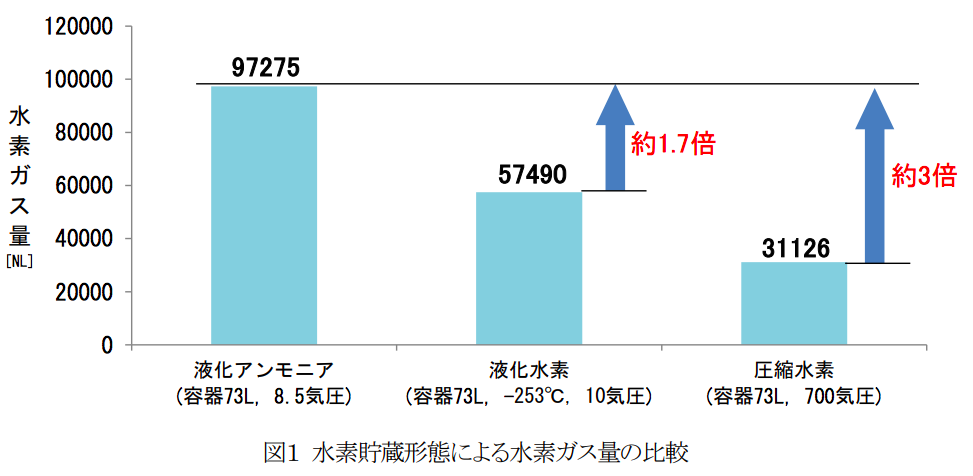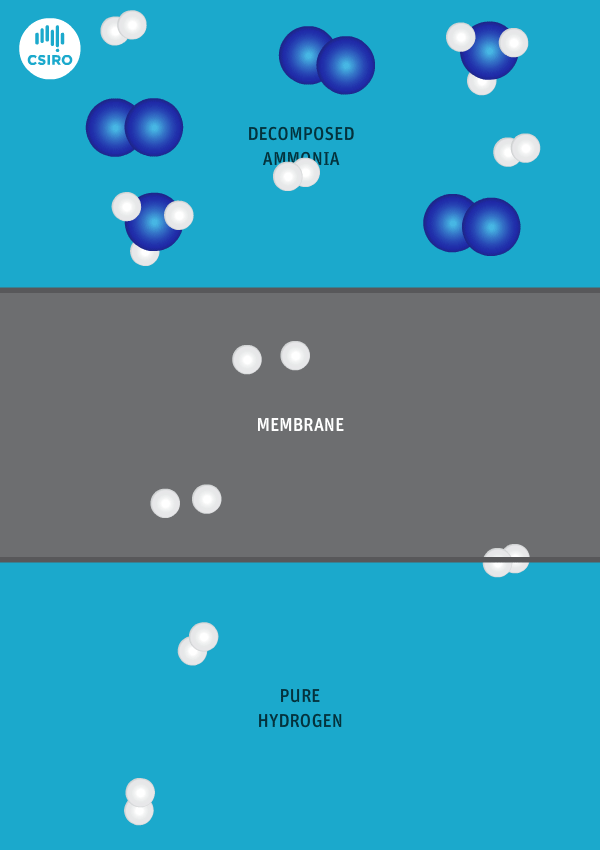In the last 12 months ... Consider the attributes that characterize a good hydrogen carrier: liquid state at ambient conditions; high volumetric and gravimetric energy density; low propensity to create lethal hazards when transported, stored, and used. Now consider that ammonia is superior to hydrogen itself in every one of these areas. Given this, it stands to reason that proponents of hydrogen fuel cells should embrace ammonia as a valuable enabling technology that can elevate the feasibility and improve the economics of fuel-cell-based systems. And indeed this embrace became evident over the last year.
Content Related to Gifu University
Sawafuji Moves toward Commercialization of NH3-to-H2 System
On May 28 Sawafuji Electric Company issued a press release detailing advances made over the last year on the ammonia-to-hydrogen conversion technology it has been jointly developing with Gifu University. The main area of progress is the rate of hydrogen generation, but the key takeaway from the announcement is that Sawafuji has set a schedule that culminates in product commercialization in 2020.
Progress toward Ammonia-to-Hydrogen Conversion at H2 Fueling Stations
In the last 12 months ... Groups in Australia, Japan, Denmark, the U.K., and the U.S. all made progress with technologies that can be used to convert ammonia to hydrogen at fueling stations. This means that hydrogen for fuel cell vehicles can be handled as ammonia from the point of production to the point of dispensing.
On the Ground in Japan: FCV Uptake and Hydrogen Fueling Stations
Module four of the ten-module research and development agenda for Japan’s Cross-Ministerial Strategic Innovation Promotion Program -- Energy Carriers is entitled “Basic Technology for Hydrogen Station Utilizing Ammonia.” The rationale for including this technology is that “high purity H2 supply system with low cost hydrogen transportation is a key issue to spread fuel cell vehicles (FCVs).” A story published last week in the Tokyo Shimbun says that to date FCVs have not spread very far. Among the factors seen as constraints is the cost of hydrogen fueling stations (HFS). The Tokyo Shimbun story states that “according to industry officials, each station that supplies hydrogen to fuel cell vehicles runs about ¥400 million ($3.6 million) in construction costs. In order to achieve profitability, about 1,000 fuel cell vehicles are required as customers per location. Construction is not proceeding.” So far, the players focused on FCVs do not seem to be looking to ammonia as an expedient that will help reduce the cost of HFS and thereby encourage their construction and by extension the uptake of FCVs. This appears to be a missed opportunity whose benefits may become too compelling to ignore.
New Ammonia-Reforming Catalyst System
On April 27 the on-line journal Science Advances published “Carbon-free H2 production from ammonia triggered at room temperature with an acidic RuO2/γ-Al2O3 catalyst.” The lead author, Katsutoshi Nagaoka, and his six co-authors are associated with the Department of Applied Chemistry at Oita University in Japan. The innovation featured in the paper could prove to be an important enabler of ammonia fuel in automotive applications.
On the Ground in Japan: LH2 and MCH Hydrogen Fueling Stations
While Japan’s Cross-Ministerial Strategic Innovation Promotion Program (SIP) continues to evaluate liquid hydrogen (LH2), methylcyclohexane (MCH), and ammonia as hydrogen energy carriers, Japanese press reports show that the backers of liquid hydrogen and MCH are building an early lead over ammonia with hydrogen fueling stations based on their favored commodities.
New Technology for Generating Hydrogen from Ammonia
On March 21, Gifu University in Japan announced a breakthrough in technology for generating hydrogen from ammonia. A press release from the Gifu Prefectural Association Press Club stated that Professor Shinji Kambara, Director of the Next Generation Research Center within the Environmental Energy Systems Department at the Gifu University Graduate School of Engineering, has developed a "plasma membrane reactor" that is capable of evolving hydrogen with a purity of 99.999 percent from an ammonia feedstock. This surpasses the 99.97 percent purity announced last July by a research group centered at Hiroshima University with a hydrogen generation device based on a different technology.





